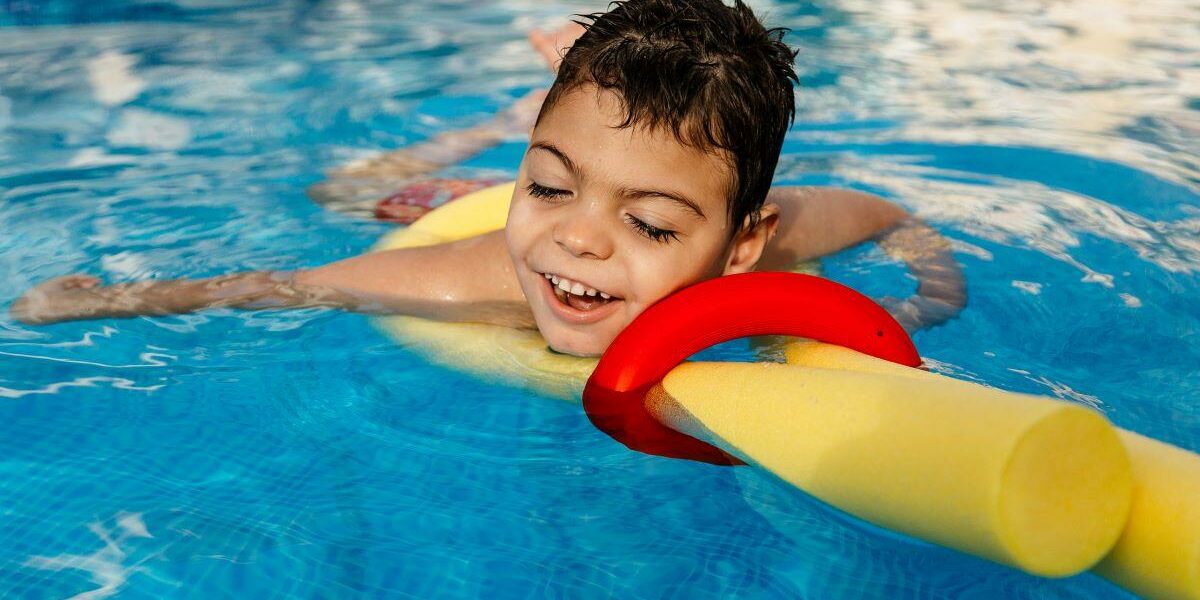Laura Cook at CL Medilaw and Dr Heather Epps, Physiotherapist and Director of Aquaepps and Lymden Hydrotherapy and Physiotherapy (LHAP) discuss the benefits of Aquatic physiotherapy (formerly known as hydrotherapy) for children living with disabilities and how this can be accessed.
What is aquatic physiotherapy and how does it work?
Aquatic physiotherapy is a type of physiotherapy that uses water-based exercises and the properties of water to assist and resist movements in different positions to improve mobility, strength, balance, physical functioning and wellbeing. It is a recognised form of therapy and rehabilitation which is both inclusive and fun, meaning children who suffer from a wide range of physical limitations can benefit from this form of therapy.
Aquatic physiotherapy usually takes place in heated water in purpose-built hydrotherapy pools with a physiotherapist trained in aquatic physiotherapy. Most hydrotherapy pools have specialist equipment such as poolside and ceiling track hoists and shower trolleys that can be raised and lowered to assist with changing, showering and transferring into and out of the pool.
In day to day life, gravity and bodyweight affect the way the body moves and causes pressure through the joints and soft tissues. Gravity is a force that our muscles have to overcome in order to move our limbs and keep our bodies upright. Being in water helps to alleviate these pressures on the body, the upward or “buoyant” force of water reduces the effects of gravity, making it easier to move, balance, stand and walk. Aquatic therapy provides an environment that allows exercise to be performed in a safe and effective way.
Aquatic physiotherapy allows skills to be developed, such as rolling over, sitting up, learning to stand, having better balance when walking, running and jumping, and these skills can then be transferred to everyday life.
Forms of aqua therapy may include; swimming , basic exercise in water such as range of motion and strengthening exercises, balance work, exercise not possible on land (such as step ups or squats, walking and running) and assisted standing and walking exercises.
Aquatic physiotherapy with a trained physiotherapist additionally includes specific techniques and handling to influence muscle tone, neuro-developmental techniques, mobilising and strengthening techniques, in addition to other water based techniques such as aqua yoga and aqua aerobics.
What are the benefits of aquatic physiotherapy?
In our field of practise, we are well aware of the benefits that water-based activities and therapies have on children with brain conditions. For many, water-based therapies provide a soothing and buoyant environment that allows the muscles to relax, enabling them to move freely. This gives those children the freedom to move around without the use of a wheelchair or a standing frame.
Aquatic therapy can help improve gross motor movement, muscle strength, balance and body awareness. It can also develop confidence in social interaction and play. In comparison to regular, land-based physiotherapy, the use of warm water in aquatic physiotherapy, has the additional benefits of:
- reducing muscle spasticity because of the pressure of the water against the body in combination with the effects of heat on the body
- reducing pain and muscle spasms or dystonia because the muscles relax in water and movements are undertaken without gravitational pressure
- complete body relaxation (there is no need for a supporting surface such as the floor, a chair, bed or other equipment)
- a much greater stretch can be applied to parts of the body, or the body as a whole in a way that is not possible out of the water
- it is possible for muscles to work when in the water in a way that is not possible on land as the effort to move is significantly less when in water
- increasing postural control and muscle strength, particularly in the muscles around the trunk and neck in a way not possible on land due to the support given by the water
- the ability to move or be moved from one position to another for example; rolling or sitting up from lying down, can be learned in the water before they can be achieved on land by using the properties of water to assist with these movements
- increasing balance by challenging balance in water without the fear and risk of falling allowing balance reactions to be worked upon
- improving fitness, stamina, exercise tolerance and endurance – as movement in water requires less effort this allows exercise to be continued for longer than on land
- improving sensory feedback which is necessary for movement and gross motor function and skills
- improving breath control and coordination which assists voice production and swallow with specific techniques helped by the pressure of the water against the chest wall
- developing independence and independent movement such as swimming, standing, stepping or walking through the water
- improving general health and wellbeing because of the beneficial effects on the body including feelings of wellbeing and confidence, reduced pain and muscle spasms, greater control of the body, and the achievement of goals that may not be possible on land
- it is fun and enjoyable and improves quality of life.
How is aquatic physiotherapy accessed as part of rehabilitation?
It can be beneficial to have blocks of aquatic physiotherapy rehabilitation, particularly when working towards specific goals or following surgery or other interventions such as; Botulinum Toxin injections and serial casting. It is also beneficial if there has been a deterioration in condition, which sadly many people suffered during the pandemic. Rehabilitation is also crucial following an initial brain injury and early intervention has been shown to give better long-term outcomes.
Rehabilitation blocks can be undertaken at specialist centres or residential settings such as the Children’s Trust or Lymden Hydrotherapy and Physiotherapy (LHAP). Some NHS services can also provide rehabilitation. This will usually take place in hospital with follow up in SEN schools or hospital pools. Alternatively, NHS services may fund places at specialist rehabilitation centres.
These periods of rehabilitation will often also include land-based physiotherapy and will work towards specific goals. These can include daily or twice daily sessions or if families live within travelling distance, they may attend two or three times a week.
How to access aquatic therapy?
Aquatic therapy usually takes place in a purpose-built hydrotherapy pool, these may be accessible locally via a public hydrotherapy pool. It may also be possible for aquatic therapy to take place in a normal swimming pool, however this would not be ideal for a child who has a condition that limits their mobility as it is harder for them to generate their own body heat. For some children, hydrotherapy can be accessed through their school where these facilities are available.
However, for many people, public hydrotherapy pools are few and far between, and the practicalities of travelling to a pool can be difficult, along with having sufficient care support whilst at the pool. Alternatives may include 1:1 swimming lessons or using a pool at a local hotel where pool temperatures may be warmer and the pool itself less crowded or busy.
For those who have a possible litigation claim arising from their brain injury, it may be possible to claim the costs of an aqua therapy pool to be built at home, either in an extension to their property, or within a separate purpose-built outbuilding. Home pools allow access to this form of therapy on a regular, even daily basis, as part of therapy routine but also as a great way to exercise and have some fun with friends and family.
How to incorporate water-play at home?
In addition to water-based therapies, water-based activities can also be beneficial for children with brain conditions as a form of play or sensory stimulation. Water-based activities can easily be incorporated at home and examples may include: using sensory toys, bubbles or a bubble mat in the bath-tub, using hot-tub for play or general water play such as using a water table or splashing with cups.
Authors’ profiles
Laura Cook is a Partner at CL Medilaw who work closely with many families with children who have an acquired brain injury or brain condition arising out of medical negligence or personal injury. CL Medilaw are dedicated to changing the lives of their clients by making legal matters as straightforward as possible and securing early provision of support to really make a difference to the families they represent.
Dr Heather Epps is a paediatric and adult neurophysiotherapist who specialises in Aquatic physiotherapy. She is the Director of Aquaepps and Lymden Hydrotherapy and Physiotherapy (LHAP) (www.lhap.co.uk) a company based in Reigate, Surrey offering a range of services, weekly treatment and intensive rehabilitation blocks for children and adults with disabilities, assessments and reports, training and advice for families, carers and professionals, and pool design and development consultation. Heather is committed to sharing her expert knowledge of aquatic therapy and the benefits this can have for those living with disabilities. Find out more here: https://aquaepps.co.uk/.
Although we are grateful to receive support from a number of corporate sponsors, we do not endorse any specific organisation. If you are seeking legal advice, we encourage you to contact a number of experienced solicitors for an initial discussion before selecting a firm.









